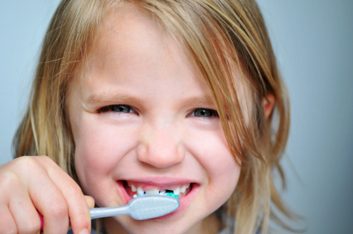
Oral health for life
Your child has 20 teeth by the time she’s three years old. And although she’ll lose them all before her teens, they need to be well taken care of in the meantime. These teeth help her speech development, her eating and even the way her jaw grows. Here’s how you can help your half-pint maintain good oral health.
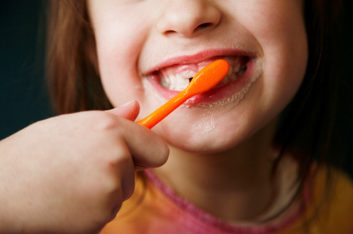
Double-check after brushing
Your child may be brushing his own teeth by age four, but that doesn’t mean Mom or Dad shouldn’t step in for a spot check. “Kids are getting more independent, and that’s a good thing. But their dexterity may not be the best,” says Dr. Robert MacGregor, a dentist in Kentville, Nova Scotia. Until your kid is six or seven (depending on the child) spend a couple of minutes on a mouth inspection or a follow-up brushing to make sure all surfaces have been cleansed.
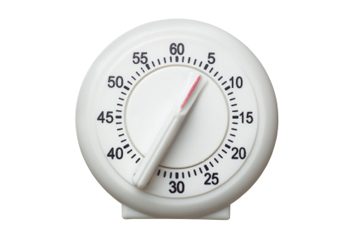
Follow the two-minute rule
Like adults, children should brush twice a day for at least two minutes. But it’s tough for kids to know when they’ve brushed long enough. “A child’s concept of time is not the same as an adult’s,” Dr. MacGregor says. Try setting a timer for two minutes, or use an hourglass or even a timer toothbrush, and your child will be able to get on board.
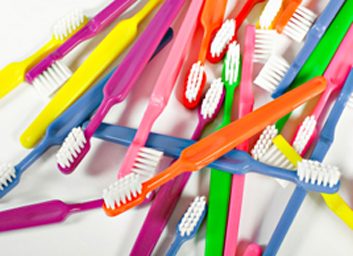
Buy the right toothbrush
A child’s toothbrush should be small enough to fit comfortably in the mouth and reach all the way to the back. Choose one that’s soft-bristled so it doesn’t damage teeth and gums.
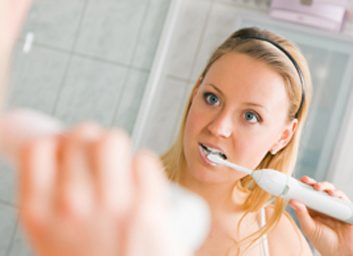
Set a good example
Make sure your kid sees that you consider tooth care to be important. Talk about oral health as a family, and let your child know you look after your own teeth. If you’re blasé about brushing, your kid will be, too.
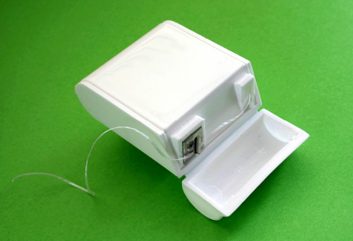
Don’t forget about flossing
Flossing was less of a concern when your child’s baby teeth first showed up, since they likely had gaps between them. But as his second teeth grow in, they may pack themselves in tight. That’s a trap for plaque, says Dr. MacGregor. Since it may be hard for your kid to handle floss, consider letting him use a floss holder with a handle, or disposable tooth flossers that come preloaded.
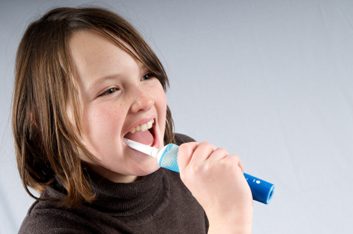
Give her the power
It’s not critical that your kid uses a power toothbrush. But it can come in handy if she isn’t reaching every tooth properly with a manual brush. Plus, for many children, the action and vibration of a power brush is just plain fun. And that might encourage them to do a more frequent or thorough job.
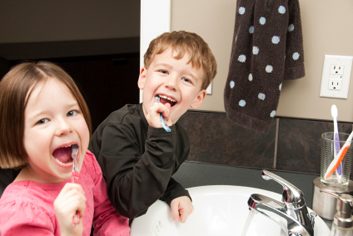
Find his motivation
Speaking of fun, there are all kinds of products on the market to motivate kids to clean their teeth, from sparkling fruity toothpaste to character toothbrushes to mouthwash that highlights plaque to show off what they’ve missed. As long as the products meet the basics – the toothpaste contains fluoride, and the toothbrush head is small enough – feel free to choose whatever floats his or her boat.

Watch what she eats
Help her keep her teeth healthy by limiting pop and candy (especially the hard kind that is sucked, not chewed). Fruit-based treats and juices are high in sugar too, so try to make sure they’re eaten with a meal, not separately as a snack. Aim for snacks that won’t stick to your child’s mouth, like apples, carrot sticks or cheese. “It’s very important that parents understand that frequent sugar attacks can cause decay,” says Dr. MacGregor.
